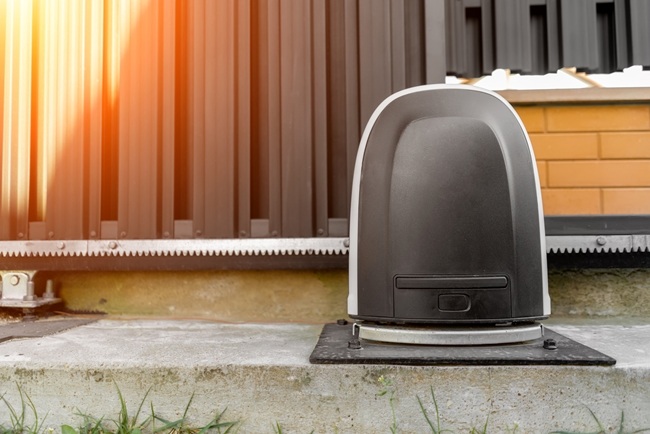Automatic gates offer everything from convenience to versatility, security, and simplicity – plus everything else in between.
With a wide selection of electric gates available automatic gates are now suitable for a wide range of property types and commercial premises.
But what makes an automatic gate, well, move?
Electric gates are made up of a series of components that all work together so that the gate itself functions as smoothly as possible.
Motors are what help the gate to move, with safety devices added to help prevent accidents and injury from occurring.
However, how your automatic electric gates open and close is the most important part.
An electric gate is opened using a remote control, a transmitter, or a remote fob. This control will have buttons that correspond with the number of systems it can be programmed to and operate.
Typically, pressing the programmed button once will make the gates open as the fob sends a command to the receiver, which is connected to the gate’s motor controls.
In the UK, there are currently two frequencies in use for electric gates: 433MHz and 868MHz.
The frequencies need to correspond between the transmitters and the receivers for the remote and gate to communicate with each other appropriately.
Equipment used for an electric gate to work
Control Boxes – in here, you’ll find the receiver, battery, and power pack. Ultimately, the control box houses the motherboard that controls all of your devices. Control boxes are 100% secure and should be located away from the gate but still in a location you can access. We would recommend installing control boxes out of sight to avoid any potential tampering.
Actuator Ram – robust, heavy-duty, stainless steel, corrosion-resistant, and powder coated to suit your preferences. The activator ram is also protected from water and grit entering the mechanism due to the rubber seal around the ram itself. The actuator ram ultimately helps ensure that the electric gates are held in place when they are in the open or shut position.
Additional security measures can also be added if you feel this would be beneficial – make sure to ask a member of the Adfabs team for further information.
The activator ram is configured depending on the type of gate you’re looking to install. For example, on swing gates, the installation method will be pulled to open. However, on swing gates installed on driveways that have a slight slope and the gate must, therefore, swing out without catching, the actuator ram method will be a push to open operation.
How should you power your gates?
Solar power vs. mains power
Operating your gates solely using solar power means using everyday light. Light that hits your installed solar panels with photons, which are then converted into electrons. These electrons then flow out of the panel and into an inverter converting the DC power into AC power. Any solar energy that isn’t used is also stored for night-time use and even on cloudy days.
For gates operating off mains 240v AC power, these mains should be located near your gate. Adfabs gate openers come with low voltage transformers helping to provide the same level of service without decreasing the battery charge. If you suffer a power cut, fear not, you will still be able to operate your gate using the battery for up to 4 weeks!
A popular choice
Sliding gates are increasing in popularity over swing gates due to the amount of space they can save property owners, while still providing the same security and protection.
Efficient and versatile electric gates Yorkshire can now be found in residential, commercial, education, transport, and even military sites.
When looking at sliding gates and how these operate, there are two primary types:
Tracked sliding gates – these gates run along a fixed track with the gate’s weight carried on wheels. These tracks are installed at the base of the gate, offering great space-saving. Tracked sliding gates can also come in a variety of widths and are also suitable for those heavier gate designs. Providing a great level of security, these gates make properties and premises extremely hard to access. They are also reliable in adverse weather conditions, and mechanically, tracked gates are simpler than their counterpart cantilever sliding gates. However, this type of automatic gate does require a high level of maintenance, they aren’t suitable for sites where the ground is uneven, and the tracks need to be cleaned regularly to keep them free from dirt and debris.
Cantilever sliding gates – this type of gate system doesn’t require a track and instead is supported on rollers that are inserted to the bottom of the gate. To enable movement, guide rollers are also installed at the top of the gate. These particular electric gates are ideal on sites where the ground is a little uneven, or it may be slope upwards behind the gates opening. Smaller pedestrian style cantilever sliding gates are also available in this range. These gates are easy to install due to no groundwork being required, and there’s less maintenance as you don’t have the running track to keep clear. Cantilever gates are also quieter and cheaper than tracked gates.
To find out more about how automatic gates work and to find a style that suits you, call the team at Adfabs today on 01274 307117.

